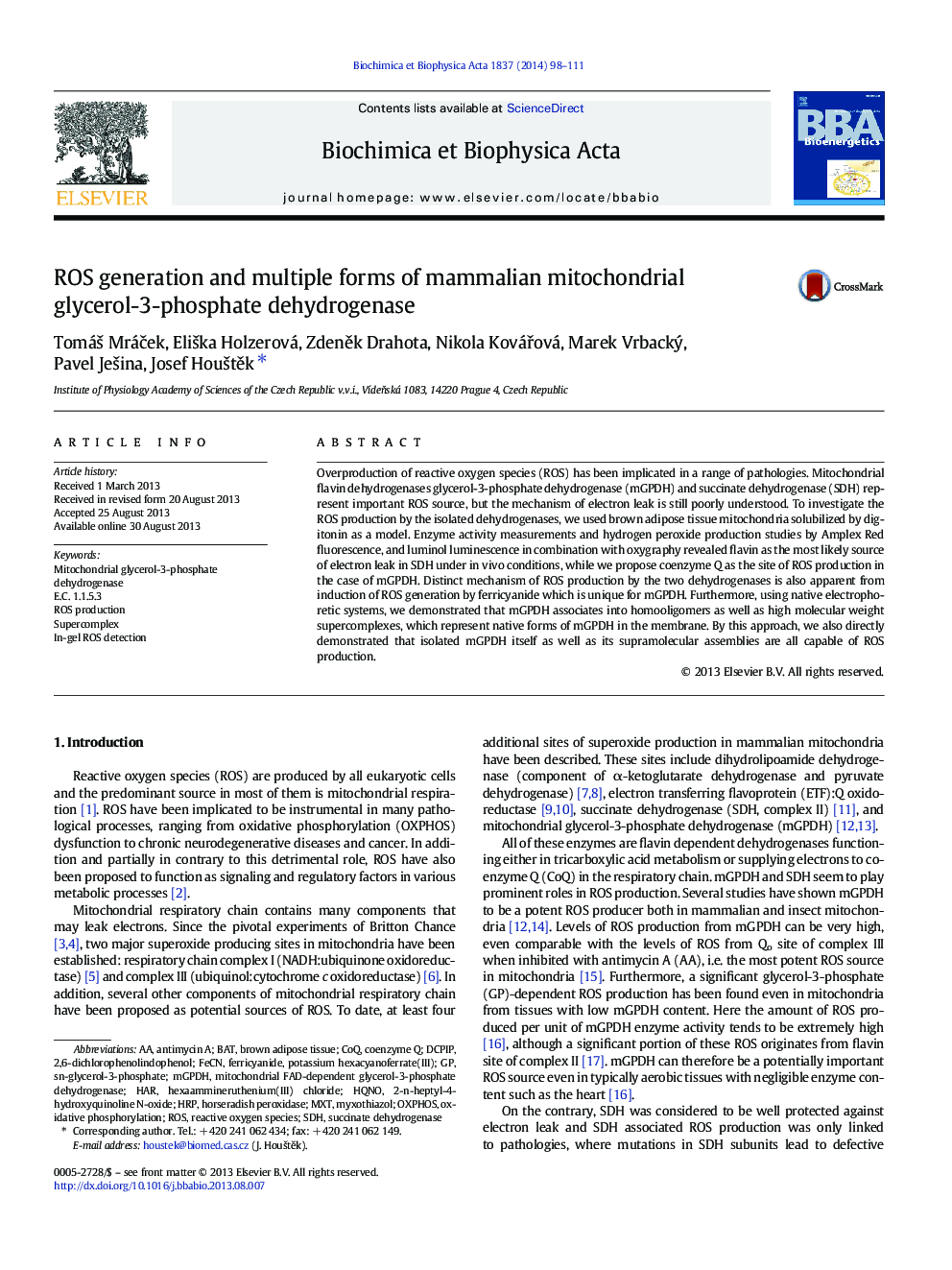| Article ID | Journal | Published Year | Pages | File Type |
|---|---|---|---|---|
| 10795762 | Biochimica et Biophysica Acta (BBA) - Bioenergetics | 2014 | 14 Pages |
Abstract
Overproduction of reactive oxygen species (ROS) has been implicated in a range of pathologies. Mitochondrial flavin dehydrogenases glycerol-3-phosphate dehydrogenase (mGPDH) and succinate dehydrogenase (SDH) represent important ROS source, but the mechanism of electron leak is still poorly understood. To investigate the ROS production by the isolated dehydrogenases, we used brown adipose tissue mitochondria solubilized by digitonin as a model. Enzyme activity measurements and hydrogen peroxide production studies by Amplex Red fluorescence, and luminol luminescence in combination with oxygraphy revealed flavin as the most likely source of electron leak in SDH under in vivo conditions, while we propose coenzyme Q as the site of ROS production in the case of mGPDH. Distinct mechanism of ROS production by the two dehydrogenases is also apparent from induction of ROS generation by ferricyanide which is unique for mGPDH. Furthermore, using native electrophoretic systems, we demonstrated that mGPDH associates into homooligomers as well as high molecular weight supercomplexes, which represent native forms of mGPDH in the membrane. By this approach, we also directly demonstrated that isolated mGPDH itself as well as its supramolecular assemblies are all capable of ROS production.
Keywords
HRPHQNOCoQ2-n-heptyl-4-hydroxyquinoline N-oxideantimycin ABATSupercomplexOXPHOSSDHDCPIPFeCNmGPDH2,6-dichlorophenolindophenolROSsn-glycerol-3-phosphateHARbrown adipose tissueROS productionsuccinate dehydrogenaseOxidative phosphorylationMyxothiazolHorseradish peroxidaseCoenzyme Qmitochondrial glycerol-3-phosphate dehydrogenaseReactive oxygen species
Related Topics
Life Sciences
Agricultural and Biological Sciences
Plant Science
Authors
TomáÅ¡ MráÄek, EliÅ¡ka Holzerová, ZdenÄk Drahota, Nikola KováÅová, Marek Vrbacký, Pavel JeÅ¡ina, Josef HouÅ¡tÄk,
